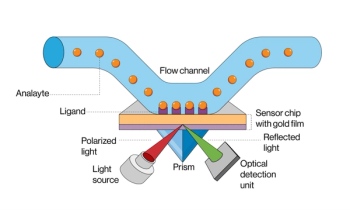
Delivering Rheumatoid Arthritis Medication Using Ultraviolet–Visible Spectrophotometry
Scientists from Indonesia recently used ultraviolet–visible (UV–Vis) spectrophotometry to test a new methotrexate (MTX) delivery system.
Scientists from Hasanuddin University in Makassar, Indonesia published an article in Spectrochimica Acta Part A: Molecular and Biomolecular Spectroscopy, on their use of ultraviolet–visible (UV–Vis) spectrophotometry to test a new methotrexate (MTX) delivery system (1). MTX is a disease-modifying antirheumatic drug (DMARD) authorized by the U.S. Food and Drug Administration (FDA) for the treatment of Rheumatoid arthritis (RA).
About 1.5 million Americans have RA, according to
MTX prevents the production of proteins and nucleic acids and is usually administered orally and by injection. However, because conventional routes have MTX be released continuously and in a non-targeted fashion, MTX could undergo hepatic first-pass metabolism, leading to the death of normal cells and potentially causing many side effects, such as shortness of breath, gastrointestinal disorders, and leukopenia. To avoid these side effects, a specific and targeted MTX delivery system is needed to deliver treatment only to the RA site.
In this study, ultraviolet–visible (UV–Vis) spectrophotometry was used to support the quantity of a new MTX delivery system. UV–Vis spectroscopy is an analytical technique that measures the number of discrete wavelengths of UV or visible light that are absorbed by or transmitted through a sample compared to a reference or blank sample (3). This property can vary depending on a sample’s composition, potentially providing information on what the sample is made of and at what concentration. For context, the scientists transformed MTX into smart nanoparticles that respond to the acidic conditions present in inflammation. This method was used to measure the quantity of MTX in the prepared patches in various scenarios: in laboratory solutions with pH 7.4 and pH 5.0, in skin tissue, and in plasma. The resulting calibration curve showed a linear relationship across these scenarios, having a correlation coefficient of 0.999. Furthermore, the lowest quantity of MTX that could be properly detected was 0.6 µg/mL in pH 7.4 solutions, 1.46 µg/mL in pH 5.0 solutions, 1.11 µg/mL in skin tissue, and 1.48 µg/mL in plasma.
This method showed both precision and accuracy, all while avoiding influence from any dilution effects. Using this approach, MTX levels were effectively measured in the developed patch in controlled lab settings and biological systems (in vitro, ex vivo, and in vivo). These findings show consistent drug content in the patches, controlled release patterns over 24 h, and pharmacokinetic profiles spanning 48 h. However, additional analytical approaches were needed to quantify MTX in studies focused on the drug’s effects on bodily functions. Regardless, this approach seems promising in using MTX and making the treatment more effective against RA.
References
(1) Febrianti, N. Q.; Tunggeng, M. G. R.; Ramadhany, I. D.; et al. Validation of UV–Vis Spectrophotometric and Colorimetric Methods to Quantify Methotrexate in Plasma and Rat Skin Tissue: Application to in vitro Release, ex vivo and in vivo Studies from Dissolving Microarray Patch Loaded pH-Sensitive Nanoparticle. Spectrochim. Acta Part A: Mol. Biomol. Spectrosc. 2024, 315, 124258. DOI:
(2) Rheumatoid Arthritis. U.S. Department of Health & Human Services 2024.
(3) Tom, J. UV–Vis Spectroscopy: Principle, Strengths and Limitations and Applications. Technology Networks 2023.
Newsletter
Get essential updates on the latest spectroscopy technologies, regulatory standards, and best practices—subscribe today to Spectroscopy.





